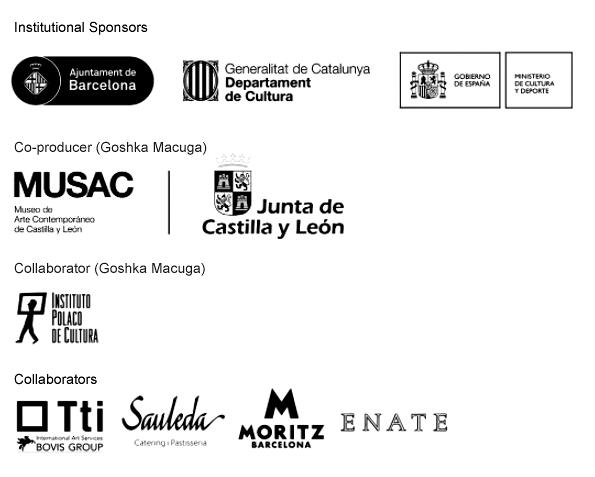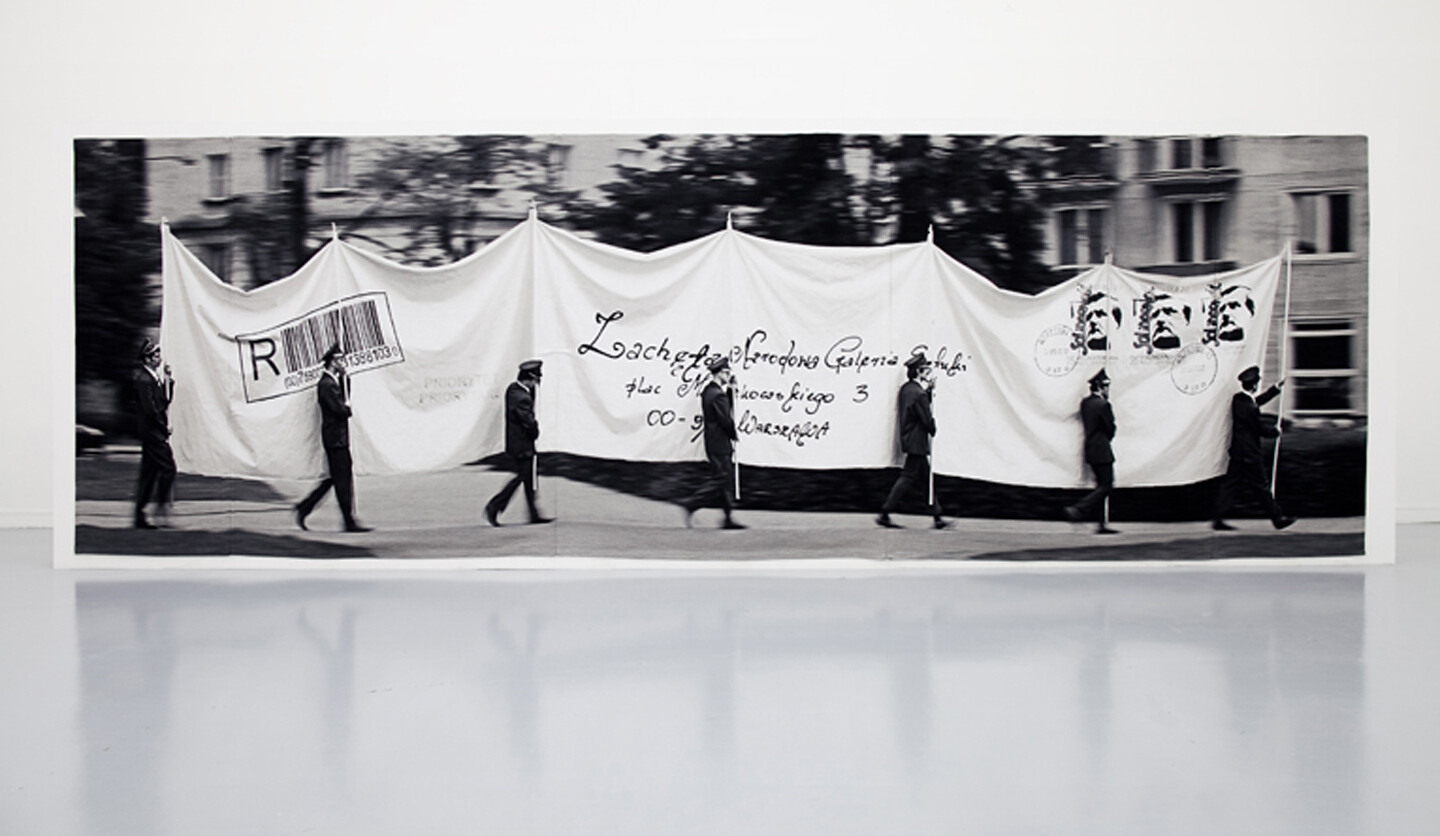Antoni Tàpies: Melancholia
March 16–September 25, 2022
Carrer Aragó, 255
08007 Barcelona Catalonia
Spain
Hours: Tuesday–Saturday 10am–7pm,
Sunday 10am–3pm
T +34 934 87 03 15
museu@museutapies.org
Goshka Macuga: In Flux
Curator: Neus Miró
The work of Goshka Macuga (Warsaw, Poland, 1967) aims to be a re-reading of inherited historical narratives, both of events and people, focusing on the possible and multiple relationships between those narratives and the present day. In 1989, after the fall of the Berlin Wall and the subsequent transformation of the Eastern European bloc, Macuga moved to London, where she continued her artistic training and has lived ever since.
From a historical event or person, often linked to the place where the work is exhibited, Macuga begins a series of searches that result in a composite, polyphonic piece, articulated as a system, and incorporating works created by herself and by other artists and/or collaborators, together with elements from archives and collections, as well as documents. All this is done with the aim of relocating, questioning and proposing new approaches to the narratives inherited from history.
Among other works, In Flux brings together three large pieces: Plus Ultra (Further Beyond) (2009), The Nature of the Beast (2010) and Untitled (The Letter) (2011). The title alludes to the working method used by Macuga, where everything is connected; it also refers to the circulation of past images and narratives as a constant element, as well as their recurrent use in her work, where they are re-signified. Each piece is articulated as a large spatial assemblage. No hierarchies are established between the different constituent elements, while unconventional, nonlinear readings of the characters or historical facts to which it refers are allowed to unfold.
This exhibition has been co-produced with the Museo de Arte Contemporáneo de Castilla y León (MUSAC), where it was previously presented. In line with Macuga’s usual way of working, each exhibition incorporates different elements relating to the three large works or installations. At Fundació Antoni Tàpies, Macuga establishes a dialogue with Antoni Tàpies’ work. On this occasion she has made an ephemeral intervention on one of the museum’s walls, inspired by Tapies’ work Ni identitat (Not even identity, 2003).
Antoni Tàpies: Melancholia
Curator: Núria Homs
This exhibition focuses on the work that Antoni Tàpies (Barcelona, 1923–2012) produced in the first half of the 1990s. During those years, Tàpies seems to have been dominated by a certain melancholia. Despite the success he had achieved, despite being busy with exhibitions and awards, and despite the creation and opening of the Fundació that bears his name, during this time Tàpies made constant references to death and, more specifically, to pain, to the physical pain implicitly associated with life. It seems that Tàpies was starting to be aware of the inexorable passage of time and his own advanced age.
At the same time, the fall of the Berlin Wall in 1989 and the subsequent break-up of the Soviet Union signalled the failure of the political project with which he had identified. For Tàpies, as for many other left-wing intellectuals and artists of his generation, the collapse of state socialism seemed to have exhausted the historical trajectory of socialism itself, while capitalism presented itself as an insurmountable horizon in which any sense of utopia was no longer possible and the past was reduced to its totalitarian dimension.
In addition, during those years, conflicts such as the Bosnian war, which Tàpies felt very close to when he visited Venice to present his exhibition at the 1993 Biennale, or the Rwandan genocide, which he knew about from reading the newspapers and watching television, left their mark on certain works of this period, in which images of mortuary shrouds, bones and skulls, and allusions to death and pain frequently appear. The exhibition includes highly representative works such as Embolcall (Wrapping, 1994), Rèquiem (Requiem, 1995) and Dukkha (1995), alongside works that have never been exhibited before, such as Quatre elements (Four Elements, 1992), Núm. 7009 (No. 7009, 1992) and Abans-després (Before–After, 1994).


